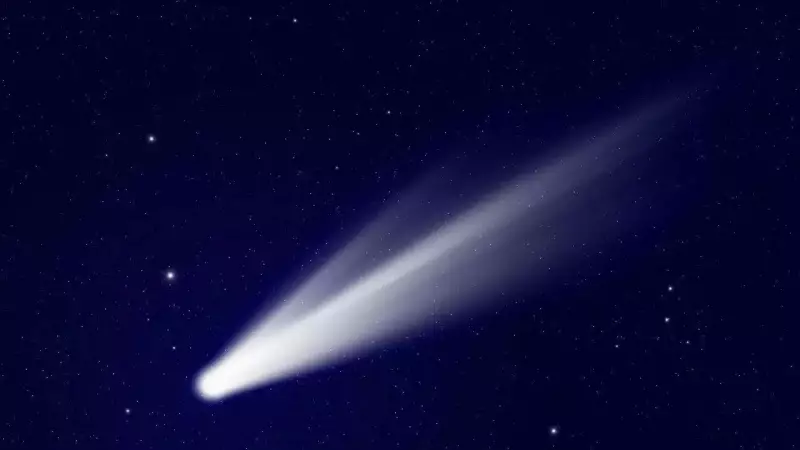
The astronomical community across India and worldwide is buzzing with excitement after the remarkable discovery of comet C/2025 V1 (Borisov). This celestial wanderer, spotted in early November 2025, has become the center of intense scientific scrutiny as researchers attempt to decode its mysterious origins and significance.
The Discovery That Captivated Astronomers
On November 2, 2025, amateur astronomer Gennadiy Borisov made his second groundbreaking celestial discovery, having previously identified 2I/Borisov, the first known interstellar comet. His latest find, comet C/2025 V1, immediately stood out due to its unusual orbital characteristics. The comet boasts a highly tilted orbit with an inclination of approximately 112 degrees and an eccentricity slightly greater than one, suggesting it might not be permanently bound to our Solar System.
Initial observations placed the comet in the constellation Virgo with a magnitude between 12 and 14, making it visible through advanced amateur telescopes. The scientific community quickly mobilized to study this intriguing visitor, with the Minor Planet Center publishing detailed analysis in report MPEC 2025-V40.
Interstellar Visitor or Solar System Native?
Early spectroscopic analysis has revealed fascinating details about comet C/2025 V1's composition and origins. Unlike Borisov's previous interstellar discovery, this comet appears to be a native of our own Solar System. Infrared observations have detected familiar volatile compounds including water ice, carbon dioxide, and carbon monoxide - elements commonly found in long-period comets originating from the outer Solar System.
Scientists now believe that C/2025 V1 likely originated from the Oort Cloud, that vast spherical shell of icy bodies surrounding our Solar System. The comet's unusual orbital pattern may result from solar heating and gravitational interactions rather than indicating true interstellar origins. This makes it an exceptional scientific opportunity - potentially a pristine object from the Oort Cloud making its first journey inward toward the Sun.
Scientific Significance and Research Opportunities
Comet C/2025 V1 represents a remarkable opportunity for astronomers to study materials preserved since the Solar System's formation over 4.5 billion years ago. As the comet approaches the inner Solar System, solar heat will release gases and dust that reveal its chemical composition, allowing researchers to analyze the building blocks that formed planets and moons.
The comet will make its closest approach to Earth around November 11, 2025, passing at approximately 103 million kilometers away. This provides a valuable observation window for telescopes worldwide, including facilities in India. Studying isotope ratios and volatile substances could offer vital information about the comet's origin point within the Oort Cloud and how gravitational forces from planets like Jupiter and Neptune influence cometary trajectories.
The Growing Role of Amateur Astronomers
The discovery of C/2025 V1 highlights how accessible space science has become in the modern era. Amateur astronomers like Gennadiy Borisov are playing increasingly crucial roles in celestial discoveries, equipped with high-quality digital imaging tools and access to global survey data. Following the initial sighting, amateur observers worldwide contributed positional data that allowed professional astronomers to refine the comet's orbit within days.
This collaboration between citizen scientists and research institutions has become fundamental to modern astronomy, enabling quicker validation of discoveries and more comprehensive data collection than professional observatories could achieve alone. The growing participation of amateur astronomers not only expands scientific reach but also maintains public engagement with cosmic exploration.
Future Implications for Astronomy
While comet C/2025 V1 might appear faint and distant, its study carries immense value for understanding our cosmic neighborhood. Analyzing how it reacts to solar radiation will help refine models of cometary activity, orbital evolution, and the chemical diversity of the early Solar System. The comet also serves as a benchmark for identifying future interstellar objects by comparing their motion and composition with known Solar System comets.
With advanced facilities like the Vera C. Rubin Observatory in Chile expected to detect thousands of long-period comets in the coming decade, patterns emerging from studies of comets like C/2025 V1 could revolutionize our understanding of Solar System formation. These findings bridge planetary science and astrochemistry, potentially revealing how organic molecules essential for life may have been delivered to early Earth through cometary impacts.
Every newly discovered comet adds another piece to the puzzle of cosmic history, and C/2025 V1 reminds us that even small, icy bodies on obscure orbits can hold answers to astronomy's biggest questions about our Solar System's origins and evolution.





